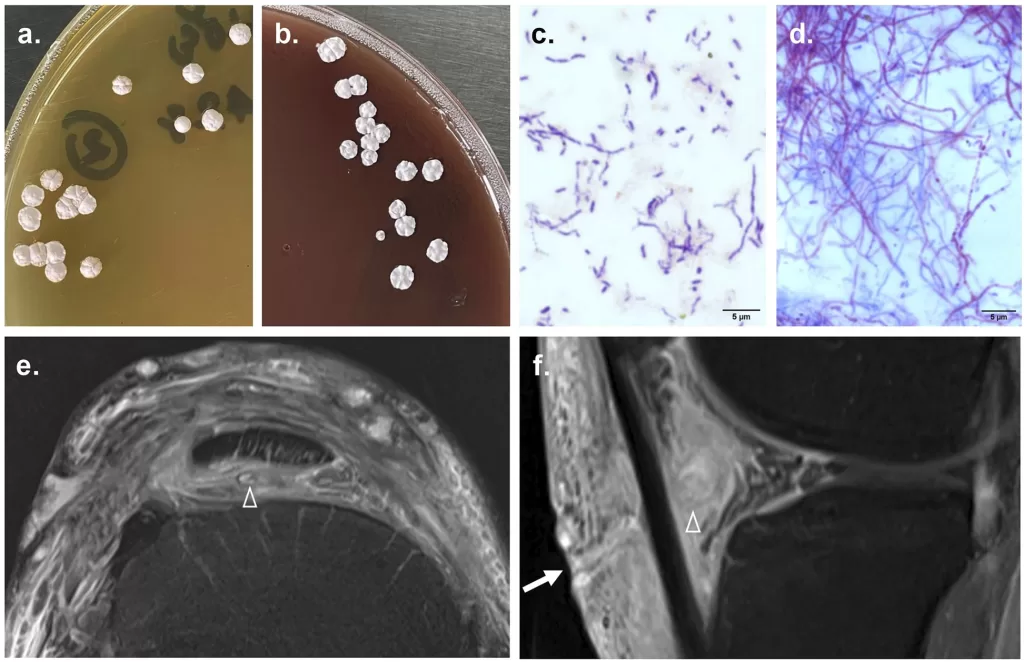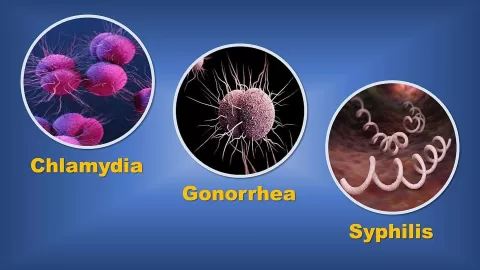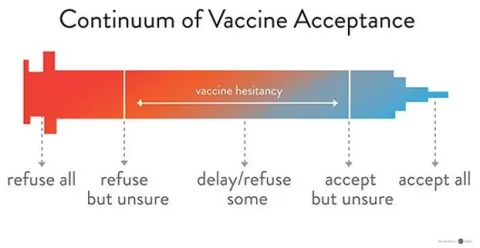Linezolid for Nocardia Actinomycetoma has emerged as a promising therapeutic approach, particularly when traditional treatments face challenges in effectively managing this complex infection. In India, where the prevalence of actinomycetoma is notably high, clinicians are increasingly considering the combination of linezolid and meropenem to combat Nocardia species effectively. This dual therapy not only targets the Nocardia bacterium but also addresses varying local susceptibility patterns, which is crucial for optimal treatment outcomes. Recent cases highlight the success of linezolid in achieving remission in patients suffering from nocardial infections, paving the way for future investigations into its broader applications. This innovative treatment model may revolutionize approaches to managing actinomycetoma, especially in endemic regions where antibiotic resistance is a growing concern.
The use of linezolid in tackling Nocardia Actinomycetoma represents a significant advancement in the fight against difficult bacterial infections. Known for its efficacy in treating resistant strains, linezolid’s combination with meropenem provides a robust clinical strategy that adapts to the unique challenges presented by pathogens like Nocardia otitidiscaviarum. As the landscape of actinomycetoma treatment evolves, this approach highlights the importance of tailored therapies that consider regional variations in drug resistance. The implications of such strategies extend beyond the individual patients, potentially influencing treatment guidelines for actinomycetoma in India and similar settings. By integrating the lessons learned from successful case studies, the medical community can better combat infections that exhibit resilience against conventional therapies.
Understanding Actinomycetoma and Its Challenges
Actinomycetoma is a chronic granulomatous infection primarily caused by actinobacteria, with Nocardia brasiliensis and Nocardia otitidiscaviarum being prominent etiological agents. This condition often presents a significant challenge due to its clinical manifestation, characterized by painless swelling, the formation of discharging sinuses, and the presence of grains. In regions like India, where Nocardia infections are prevalent, understanding the local epidemiology and the species-specific drug sensitivity is crucial for effective management. While many treatment regimens have been proposed, the complexity of actinomycetoma and its varying responses to antimicrobial therapy necessitate a tailored approach to ensure optimal outcomes for patients suffering from this debilitating illness.
The clinical approach to actinomycetoma often involves a combination of therapies to enhance efficacy and reduce the chances of recurrence. For instance, traditional first-line therapies include trimethoprim/sulfamethoxazole and dapsone, but their limitations have led to exploring alternative agents such as linezolid and meropenem. The uniqueness of each case, including the specific Nocardia subspecies involved, must guide treatment decisions. Therefore, clinicians are urged to remain vigilant regarding the local patterns of susceptibility to identify the most effective drug combinations, which could notably improve patient recovery and remission rates.
Linezolid for Nocardia Actinomycetoma: A Clinical Perspective
Linezolid, an oxazolidinone antibiotic, has gained attention for its role in treating infections caused by resistant organisms, including Nocardia species. In the case of actinomycetoma, particularly those caused by Nocardia otitidiscaviarum, the use of linezolid in combination with meropenem has shown promising results. The combination therapy capitalizes on their distinct mechanisms of action, potentially overcoming the bacterial resistance that often complicates treatment protocols. Observations from clinical cases reveal that patients treated with this combination have demonstrated significant improvements and prolonged periods of remission, hinting at its potential viability as a first-line alternative in severe cases.
Moreover, the success of linezolid in this setting underscores the importance of individualized treatment strategies that consider both the infecting organism’s susceptibility and the patient’s unique clinical context. In regions with high incidences of actinomycetoma, such as India, linezolid’s effectiveness further highlights the need for ongoing research into its application against various Nocardia species. Through these investigations, medical professionals can not only enhance the management of actinomycetoma but also contribute to the evolving understanding of combination therapies tailored to specific microbial profiles.
Meropenem’s Role in Treating Nocardia Infections
Meropenem has emerged as an important agent in the arsenal against serious bacterial infections, including those caused by Nocardia species. Its broad-spectrum activity and ability to penetrate well into tissues make it a suitable candidate for treating complex cases of actinomycetoma. As observed in clinical studies, meropenem, when used alongside other antibiotics like linezolid, can achieve remarkable clinical outcomes, particularly in patients with resistant infections. The rapid reduction in symptoms and significant healing observed in patients treated with this combination indicates meropenem’s pivotal role in these challenging infections.
The combination of meropenem with trimethoprim/sulfamethoxazole or linezolid reflects a promising multidrug strategy for combating the multifaceted challenges presented by Nocardia. Not only does this approach expand the options available for clinicians, but it also aligns with the need for flexible treatment plans that can adapt to the unique characteristics of individual infections. Embracing combination therapy that includes meropenem may lead to better treatment adherence and patient satisfaction, especially in areas where actinomycetoma is highly endemic such as in certain regions of India.
Combination Therapy for Nocardia: Evidence and Insights
Combination therapy for the treatment of Nocardia infections, particularly actinomycetoma, is a strategy that reflects a comprehensive understanding of microbial resistance and treatment needs. Evidence suggests that utilizing a multi-drug approach—such as combining linezolid and meropenem—can enhance therapeutic efficacy by targeting the organism through different pathways. Studies have highlighted that patients undergoing combination therapy often experience quicker symptomatic relief and reduced recurrence rates compared to those on monotherapy. This is particularly salient for infections caused by diverse subspecies of Nocardia, which may exhibit differing susceptibilities.
Moreover, the clinical success of combination therapy signals a shift towards more aggressive management of actinomycetoma, emphasizing the critical need for personalized treatment plans based on local patterns of drug resistance and patient characteristics. By integrating insights from various clinical reports and studies, healthcare professionals can refine their treatment protocols to ensure that therapies like linezolid and meropenem are utilized effectively in combating the complexities of Nocardia infections. As the field evolves, continuous investigation into optimal drug combinations will be essential for improving outcomes for patients worldwide.
Navigating the Challenges of Actinomycetoma Treatment in India
In India, managing actinomycetoma presents unique challenges due to the prevalence of Nocardia species and the varied patterns of drug susceptibility. The country has reported a considerable number of cases, underlying the need for effective treatment strategies that are both accessible and sustainable. Factors such as health system limitations, patient adherence to complex drug regimens, and the emergence of drug-resistant strains necessitate a robust medical framework that can adapt to meet these challenges. The ongoing research into the efficacy of drugs like linezolid and meropenem is crucial to shaping future therapeutic guidelines.
Healthcare professionals must focus on education and awareness to ensure early diagnosis and treatment of actinomycetoma. By increasing understanding of the disease within the community and among providers, more timely interventions can be achieved, leading to better health outcomes. Moreover, fostering collaborations between hospitals and research institutions to study local drug resistance patterns could enhance the overall management approach, paving the way for the development of innovative combinations and treatment regimens tailored to specific patient needs.
Patient Management Strategies for Actinomycetoma
Effective patient management strategies for actinomycetoma, especially in cases involving Nocardia otitidiscaviarum, should prioritize comprehensive care that includes thorough clinical assessments and tailored treatment regimens. Given the potential for recurrence and complications associated with actinomycetoma, ongoing monitoring of patient progress is essential. Utilizing a combination of antibiotics such as linezolid and meropenem could be a fruitful approach, often leading to improved patient outcomes and satisfaction. Regular follow-up appointments and engagement with patients about their treatment progress can also enhance adherence and response to therapy.
Moreover, healthcare teams must consider psychological and social aspects of treating patients with actinomycetoma, as these factors significantly influence treatment success. Providing support services and educating patients regarding their condition fosters a collaborative environment where patients can remain informed and empowered in their treatment journey. By incorporating comprehensive patient management strategies, healthcare providers can optimize therapeutic outcomes and contribute to long-term success in combating actinomycetoma.
Exploring Future Directions for Actinomycetoma Research
Future research in the realm of actinomycetoma treatment focuses on enhancing our understanding of Nocardia species, their resistance mechanisms, and the efficacy of various drug combinations. As the spectrum of Nocardia infections continues to evolve, studies exploring the pharmacodynamics and pharmacokinetics of combination therapies, such as linezolid and meropenem, will be vital in identifying the most effective treatment regimens. The advancements in molecular diagnostics will also facilitate timely identification of the causative agents and their drug susceptibility profiles, ultimately leading to better-informed therapeutic decisions.
Additionally, research into optimizing patient-centered approaches will be crucial in addressing the burdens of actinomycetoma, particularly in resource-limited settings. Investigating the interplay between socio-economic factors, healthcare access, and treatment adherence will be instrumental in developing frameworks that tackle these issues comprehensively. As the field progresses, fostering interdisciplinary collaborations among researchers, clinicians, and public health officials will help advance our knowledge and management strategies for actinomycetoma, paving the way for better patient outcomes globally.
The Importance of Awareness and Education in Actinomycetoma Management
Heightening awareness and education about actinomycetoma is key to enhancing its management, particularly in endemic areas such as India. Recognizing early signs and symptoms can facilitate timely interventions, reducing the risk of complications associated with untreated cases. Education campaigns targeting both healthcare providers and the public can improve diagnostic accuracy, promote understanding of the disease, and ultimately encourage affected individuals to seek appropriate medical care. When communities are informed about the existence and implications of actinomycetoma, they are more likely to engage proactively with health services.
Training healthcare professionals on the latest treatment modalities, including the use of combination therapy involving linezolid and meropenem, can empower clinicians to make informed decisions tailored to their patient populations. Furthermore, collaborative workshops and seminars that focus on the complexities of actinomycetoma management can enhance professional development and foster a culture of continuous learning in the medical community. Overall, a concerted effort to boost knowledge and awareness surrounding actinomycetoma holds significant potential to alter the disease’s trajectory positively.
Frequently Asked Questions
What is the role of Linezolid in treating Nocardia Actinomycetoma?
Linezolid serves as a crucial antibiotic in the treatment of Nocardia Actinomycetoma, particularly for infections caused by Nocardia otitidiscaviarum. It works effectively as part of a combination therapy, often alongside meropenem and trimethoprim/sulfamethoxazole, providing a viable treatment option for patients who experience recurrence after other therapies.
How effective is Linezolid for Nocardia otitidiscaviarum Actinomycetoma?
Linezolid has shown promising effectiveness in the treatment of Nocardia otitidiscaviarum Actinomycetoma. In a clinical case, a patient achieved full recovery after a regimen that included linezolid and meropenem, underscoring its potential as a vital component in managing difficult cases of this infection.
What combination therapies are recommended for Nocardia infections, including Linezolid?
Combination therapies for Nocardia infections, particularly Nocardia Actinomycetoma, often include linezolid paired with meropenem and trimethoprim/sulfamethoxazole. This approach enhances efficacy against the specific bacterial strains and improves treatment outcomes.
Can Linezolid be used as a second-line treatment for Nocardia Actinomycetoma?
Yes, Linezolid can be considered as a second-line treatment option for Nocardia Actinomycetoma, especially for patients who do not respond to initial treatments like trimethoprim/sulfamethoxazole. Its use in conjunction with meropenem further strengthens the therapeutic strategy for resistant cases.
What are the symptoms of actinomycetoma that might lead to the use of Linezolid in treatment?
Symptoms of actinomycetoma typically include painless swelling, discharging sinuses, and the presence of grains. If these symptoms persist or recur after standard treatments, clinicians may consider using Linezolid as part of a more aggressive therapeutic regimen.
Is there any specific patient population that benefits more from Linezolid for treating Nocardia?
Patients in India and other regions where Nocardia otitidiscaviarum is prevalent particularly benefit from Linezolid treatment. Its use is tailored based on local drug susceptibility patterns, making it a strategic choice for individuals with recurrent or complicated cases of actinomycetoma.
What are the potential outcomes of using Linezolid for Nocardia infections?
The potential outcomes of using Linezolid for Nocardia infections, especially when used in combination with meropenem and other agents, include significant reduction in symptoms, remission of the infection, and improved quality of life for affected patients.
How does regional variation affect the use of Linezolid for treating Nocardia Actinomycetoma?
Regional variation plays a critical role in the use of Linezolid for treating Nocardia Actinomycetoma, as drug susceptibility can differ by geographic area. Clinicians should adjust treatment protocols based on local patterns to optimize effectiveness and minimize the risk of recurrence.
| Key Points | Details |
|---|---|
| Article Title | Linezolid and Meropenem for Nocardia otitidiscaviarum Actinomycetoma, India |
| Authors | Sardana K, Sharath S, Sachdeva S, Das S, Rai G, Singh PK |
| Journal & Date | Emerg Infect Dis. 2025 Sep |
| Main Findings | Successful treatment of actinomycetoma with linezolid and meropenem after prior therapies failed. |
| Patient Background | 30-year-old male with a history of actinomycetoma following a road traffic accident. |
| Clinical Presentation | Painless swelling and pus-discharging sinuses on the right knee; significant imaging findings. |
| Microbiological Findings | Biopsy indicated Nocardia species, specifically N. otitidiscaviarum, confirmed by PCR. |
| Treatment Regimen | Intravenous linezolid and meropenem for 21 days with trimethoprim/sulfamethoxazole combined. |
| Outcome | Notable reduction in symptoms within 3 weeks; maintained remission for 24 months post-treatment. |
| Conclusion | Combination therapy of linezolid and meropenem shows promise in treating Nocardia-related actinomycetoma. |
Summary
Linezolid for Nocardia Actinomycetoma demonstrates a breakthrough approach in treating this challenging infection. The use of linezolid and meropenem in combination therapy not only resulted in rapid clinical improvement but also maintained remission for an extended period, highlighting its potential effectiveness in managing refractory cases. As the study indicates, local drug susceptibility and Nocardia subspecies variations should guide therapy, allowing clinicians to adopt tailored treatment strategies for improved patient outcomes. Continued research is essential to explore broader applications of this therapeutic combination.
The content provided on this blog (e.g., symptom descriptions, health tips, or general advice) is for informational purposes only and is not a substitute for professional medical advice, diagnosis, or treatment. Always seek the guidance of your physician or other qualified healthcare provider with any questions you may have regarding a medical condition. Never disregard professional medical advice or delay seeking it because of something you have read on this website. If you believe you may have a medical emergency, call your doctor or emergency services immediately. Reliance on any information provided by this blog is solely at your own risk.








